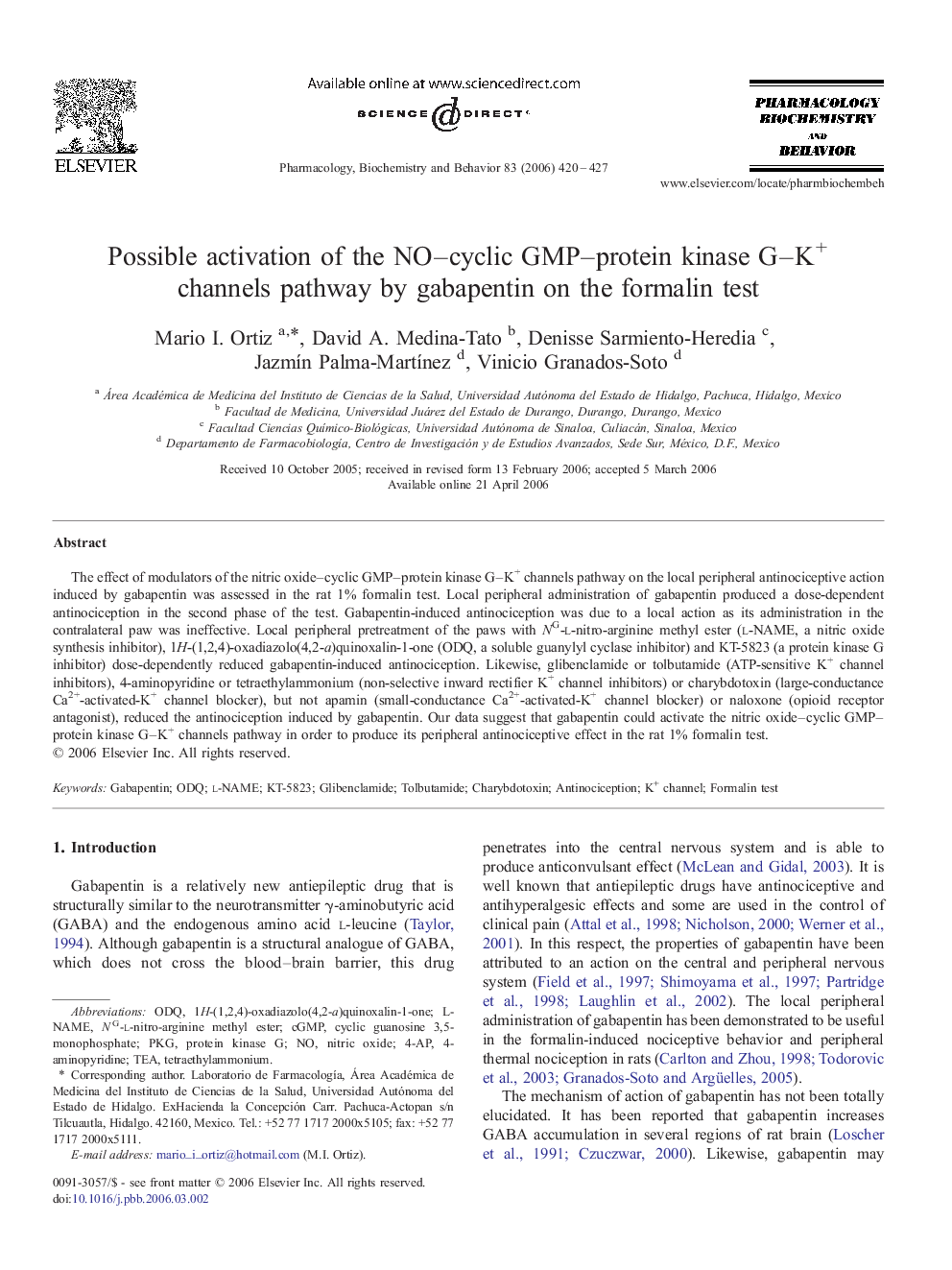| Article ID | Journal | Published Year | Pages | File Type |
|---|---|---|---|---|
| 2014422 | Pharmacology Biochemistry and Behavior | 2006 | 8 Pages |
The effect of modulators of the nitric oxide–cyclic GMP–protein kinase G–K+ channels pathway on the local peripheral antinociceptive action induced by gabapentin was assessed in the rat 1% formalin test. Local peripheral administration of gabapentin produced a dose-dependent antinociception in the second phase of the test. Gabapentin-induced antinociception was due to a local action as its administration in the contralateral paw was ineffective. Local peripheral pretreatment of the paws with NG-l-nitro-arginine methyl ester (l-NAME, a nitric oxide synthesis inhibitor), 1H-(1,2,4)-oxadiazolo(4,2-a)quinoxalin-1-one (ODQ, a soluble guanylyl cyclase inhibitor) and KT-5823 (a protein kinase G inhibitor) dose-dependently reduced gabapentin-induced antinociception. Likewise, glibenclamide or tolbutamide (ATP-sensitive K+ channel inhibitors), 4-aminopyridine or tetraethylammonium (non-selective inward rectifier K+ channel inhibitors) or charybdotoxin (large-conductance Ca2+-activated-K+ channel blocker), but not apamin (small-conductance Ca2+-activated-K+ channel blocker) or naloxone (opioid receptor antagonist), reduced the antinociception induced by gabapentin. Our data suggest that gabapentin could activate the nitric oxide–cyclic GMP–protein kinase G–K+ channels pathway in order to produce its peripheral antinociceptive effect in the rat 1% formalin test.
